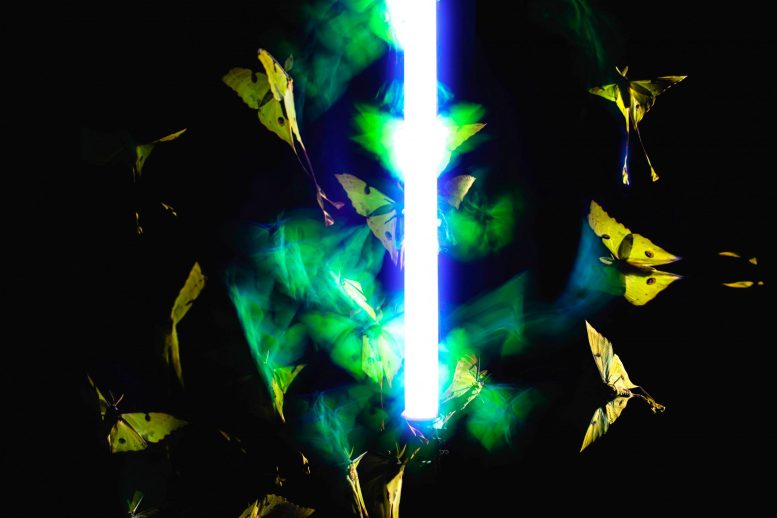
Ever since humans first began using fire, we've wondered why insects seem to have an irresistible attraction to light. With the modern use of electricity, the puzzle has taken on new importance, as our lights disrupt the behavior of insects all over the planet. Now, scientists say they've discovered why insects are attracted to flame. Credit: Sam Fabian
Scientists have discovered that insects keep their backs to light sources at night, a behavior that suggests artificial lights are disrupting their natural navigation. This finding, based on high-speed camera footage, challenges long-held beliefs and highlights the impact of artificial lighting on insect behavior and conservation.
At night in the cloud forest of Costa Rica, a small team of international scientists turned on a light and waited. Soon insects large and small descended from the darkness. Butterflies with spots resembling unblinking eyes on each wing. Shiny armored beetles. He flies. Once, even a praying mantis. Each of them did the same hypnotic, dizzying dance around the lamp as if they were connected to it by an invisible thread.
Excitement spread among the group of researchers, even though this phenomenon was not new to them. The difference is that they now have sophisticated technology and high-speed cameras — capable of capturing fast, frenetic orbits — to map the hard-to-track movements of hundreds of insects and discover the secrets surrounding the reasons for their antics around light. At night.
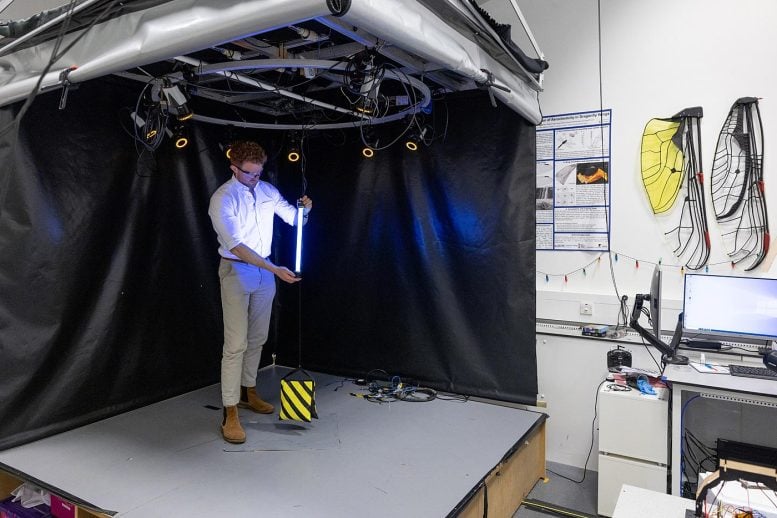
The research project began in Lin's lab where Fabian works, which has a motion-capture arena like the kind used in movies, only the size of insects. Credit: Sam Fabian
Detection of insect behavior
A surprising detail emerged in the data: While flying, the insects kept their backs facing the artificial light source.
“You watch slow-motion videos and see it happening over and over again,” says Yash Sondhi, a recent Ph.D. in biological sciences at Florida International University. Graduate and current postdoctoral researcher at the Florida Museum of Natural History. “Maybe when people notice it, like around porch lights or street lamps, they seem to fly straight at it, but that's not the case.”
This behavior, which had not been documented before, was published in the journal Nature CommunicationsIt offers a new explanation, and while it confirms that light inactivates insects, it also offers a new take on this conservation interest.
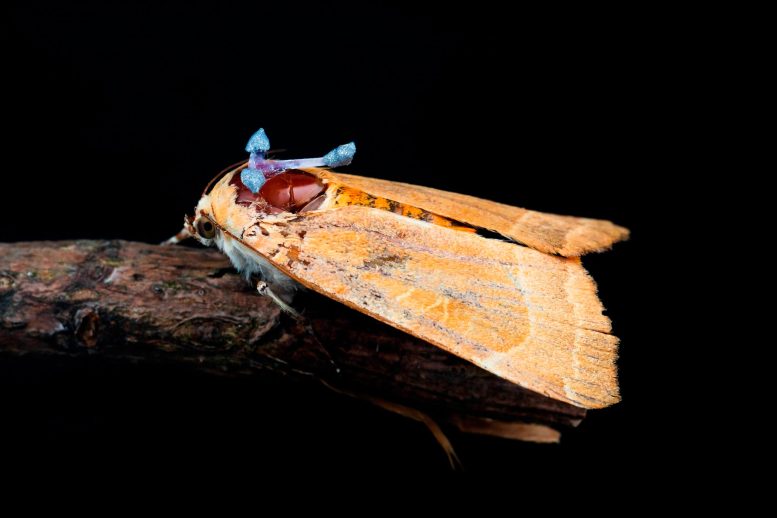
Small L-shaped tags were pasted along the backs of many of the moths and dragonflies, so when they flew around the light, they were also collecting data about how they rolled, turned and moved through three-dimensional space. Credit: Sam Fabian
Over millions of years, insects have evolved to master flight by relying on the brightest thing they can see: the sky. Today, the lit world throws its instincts for a loop. The insects believe that the imposter “sky” they find is the real one and become trapped in an exhausting cycle trying to stay oriented. It's a futile effort that results in clumsy maneuvers and occasional head-on collisions into the light.
Gravity, flight and artificial light
A good understanding of gravity is mandatory for all animals.
Especially those that fly, such as insects that perform flying tasks that can exceed those performed by human pilots. When flying, they feel such rapid acceleration that their gravity sensing becomes unreliable. They need the sky, even at night, to know which direction to turn and navigate, while maintaining control in the air. But artificial light messes with this system.
Sondhi began connecting the dots between insect vision, light, and flight when he joined the lab of Jamie Theobald, an assistant professor of biology at Florida International University, in 2017.
However, the work really began when he found a group of specialists in the fields of insect flight and sensory systems who were determined to collect and study a deluge of 3D flight data to see what, if anything, was revealed.
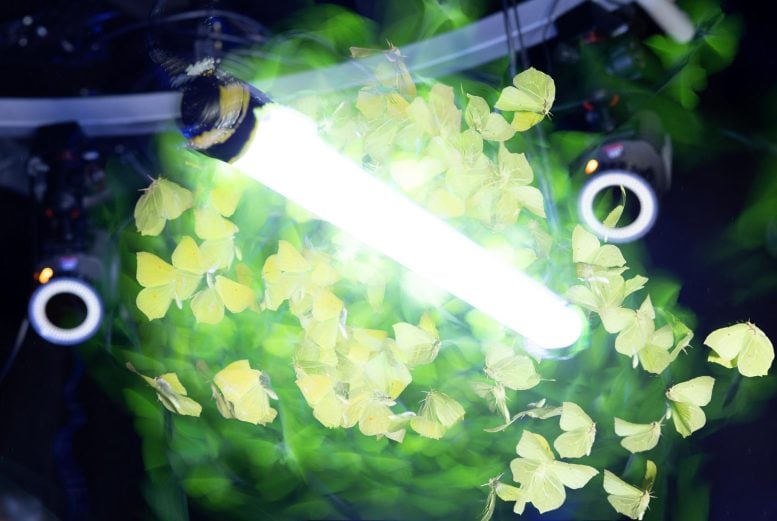
The insects fly in complex circles around the artificial light source, keeping their backs to the lamp which they seem unable to distinguish from the night sky. Credit: Sam Fabian
Pioneering discoveries and future considerations
This group included Sundy and Theobald, as well as Sam Fabian and Huai Ti Lin from Imperial College Londonand Pablo Allen of the Council for International Educational Exchange in Monteverde, Costa Rica.
The research project began in Lin's lab where Fabian works, which has a motion-capture arena like the kind used in movies, only the size of insects.
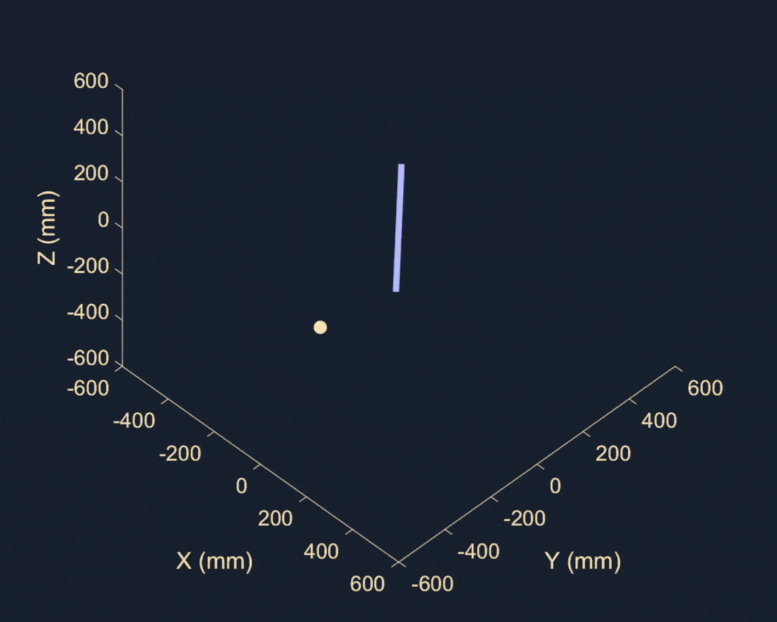
Credit: Florida Museum
Small L-shaped tags were pasted along the backs of many of the moths and dragonflies, so when they flew around the light, they were also collecting data about how they rolled, turned and moved through three-dimensional space.
“In one of the first experiments, I let a large yellow butterfly under the wing take off from my hand and fly directly over the UV lamp and it instantly turned upside down,” he said. “But we didn’t know then whether the behavior we saw and measured in the laboratory could also be seen in the wild.”
Attaching trackers to small insects requires patience, dexterity, and practice. Credit: Florida Museum photo by Jeff Gage
National Geographic funding helped the team travel to Costa Rica — a country rich in diverse insect life — with their cameras to find out.
In total, they collected more than 477 videos covering more than 11 insect orders, then used computer tools to reconstruct points along the flight paths in 3D. Combined with motion capture data, the researchers figured it all out Classify In fact, they turned upside down when exposed to light, just like the big yellow wing in the lab.
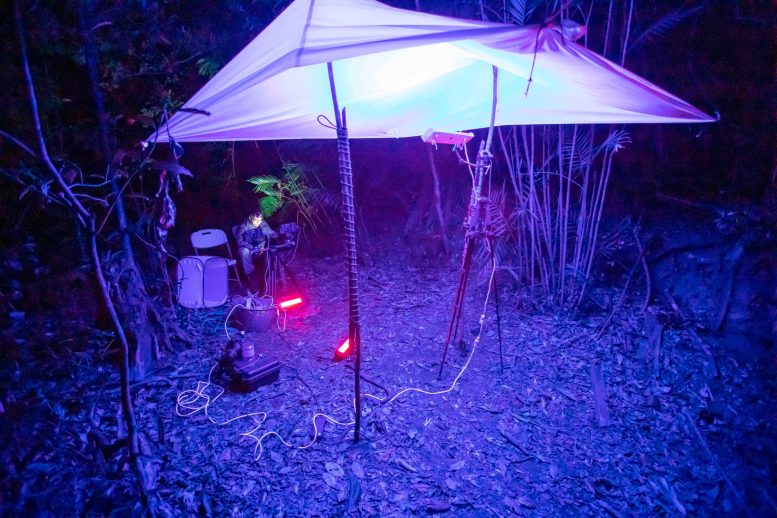
To test their theory in the wild, the team traveled to Estación Biológica Monteverde in Costa Rica, where they set up lights under a tropical rainforest canopy. Credit: Yash Sondhi
“This was a prehistoric question. In the early writings, people would notice this around a fire,” Theobald said. “All of our speculation about why this happened turned out to be wrong, so this is definitely the coolest project I’ve ever been a part of.”
While the study confirms that light inactivates insects, it also suggests that the direction of light matters. The worst is an uplight or just a bare bulb. Shrouding or shielding may be key to offset negative effects on insects.
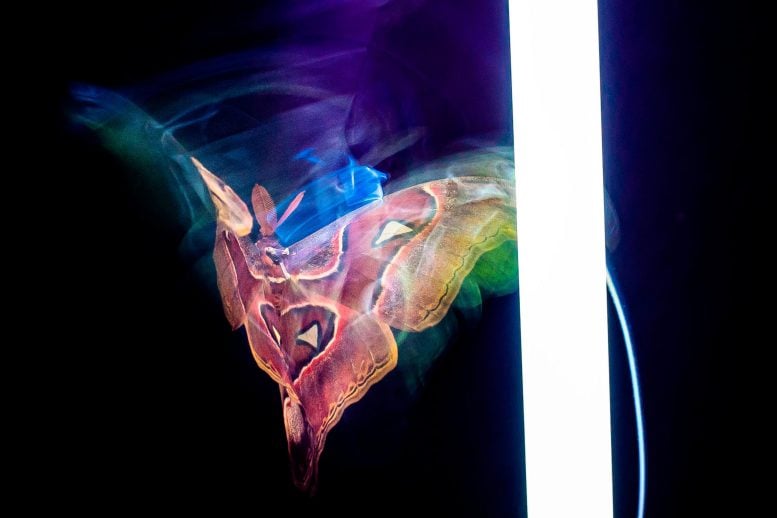
The type of light that is most annoying to insects comes from bulbs that are directed upward and those that lack a shade. Shrouding or shielding may be key to offset negative effects on insects. Credit: Sam Fabian
The team also thinks about lighter colors, as if cool versus warm colors have different effects. Of course, the still unexplained mystery surrounds attraction to light, and how it occurs in the first place over such great distances.
“I've been told before that you can't ask why questions like that, and that there's no point in them,” Sondhi said. “But through our perseverance and finding the right people, we came up with an answer that none of us had really thought about, but that is so important for raising awareness about how light affects insect populations and informing changes that can help them.”
Reference: “Why Do Flying Insects Congregate Under Artificial Light” by Samuel T. Fabian, Yash Sondhi, and Pablo E. Allen, and Jimmy C. Theobald, Huai Ti Lin, January 30, 2024, Nature Communications.
doi: 10.1038/s41467-024-44785-3

“Beer aficionado. Gamer. Alcohol fanatic. Evil food trailblazer. Avid bacon maven.”
